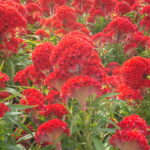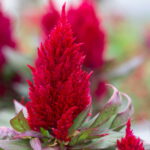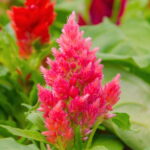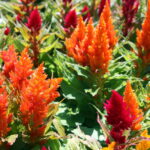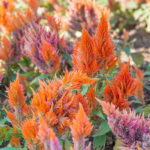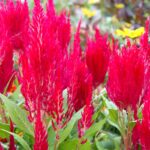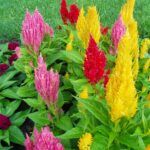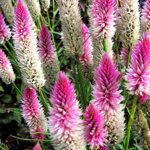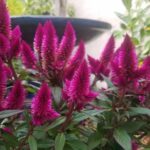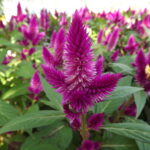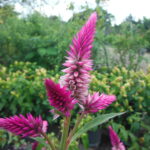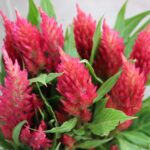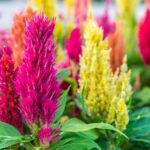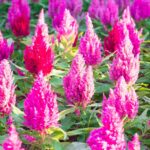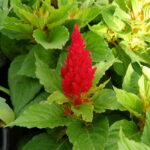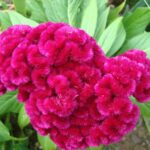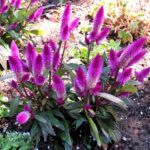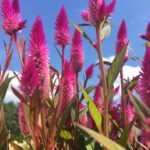Celosia, commonly known as cockscomb or woolflower, is a strikingly colorful plant that can add a unique flair to your garden. Known for its vibrant, flame-like flower heads, celosia is a popular choice for both ornamental gardening and floral arrangements. Here’s a comprehensive guide to help you grow and care for celosia.
Choosing the Right Variety
Celosia comes in three main types:
- Celosia Argentea (Plumosa): Features feathery, plume-like flowers.
- Celosia Cristata: Known as cockscomb, it has crested, brain-like flower heads.
- Celosia Spicata: Also called wheat celosia, it has flower spikes resembling wheat.
Each type offers a range of colors, including red, yellow, pink, orange, and purple.
Planting Celosia
1. Soil Preparation
- Soil Type: Celosia prefers well-draining soil with a pH between 6.0 and 7.0. Amend heavy clay or sandy soils with organic matter like compost to improve drainage and fertility.
- Location: Choose a sunny spot as celosia thrives in full sun, requiring at least 6-8 hours of direct sunlight daily.
2. Sowing Seeds
- Indoors: Start seeds indoors 6-8 weeks before the last frost date. Sow seeds on the surface of the soil, pressing them lightly, and cover with a thin layer of vermiculite or fine soil. Maintain a temperature of 70-75°F (21-24°C) and keep the soil moist.
- Outdoors: After the last frost, sow seeds directly in the garden. Thin seedlings to 6-12 inches apart, depending on the variety.
3. Transplanting Seedlings
- Harden off seedlings by gradually exposing them to outdoor conditions for a week before transplanting. Space plants 6-12 inches apart in the garden, ensuring they have ample room to grow.
Care and Maintenance
1. Watering
- Celosia requires consistent moisture, especially during dry periods. Water deeply once a week, ensuring the soil remains moist but not waterlogged. Avoid overhead watering to prevent fungal diseases.
2. Fertilizing
- Apply a balanced, water-soluble fertilizer every 4-6 weeks during the growing season. Over-fertilization can lead to excessive foliage growth at the expense of flowers.
3. Pruning and Deadheading
- Deadhead spent flowers to encourage continuous blooming and prevent self-seeding. Regularly pinch back the tips of young plants to promote bushier growth.
4. Pest and Disease Management
- Common Pests: Aphids, spider mites, and whiteflies can be problematic. Use insecticidal soap or neem oil to manage infestations.
- Diseases: Celosia is susceptible to fungal diseases like powdery mildew and root rot. Ensure proper spacing and air circulation, avoid overhead watering, and use fungicides if necessary.
Harvesting Celosia
Celosia flowers can be harvested for fresh or dried arrangements. Cut the flowers when they are fully open but before they start to fade. For dried flowers, hang them upside down in a dark, dry, and well-ventilated area until completely dry.
Growing Celosia in Containers
Celosia can also be grown in containers. Choose a pot with good drainage, use high-quality potting soil, and ensure the container receives plenty of sunlight. Water regularly, and fertilize with a balanced, water-soluble fertilizer every 4-6 weeks.
 Flower Love
Flower Love

